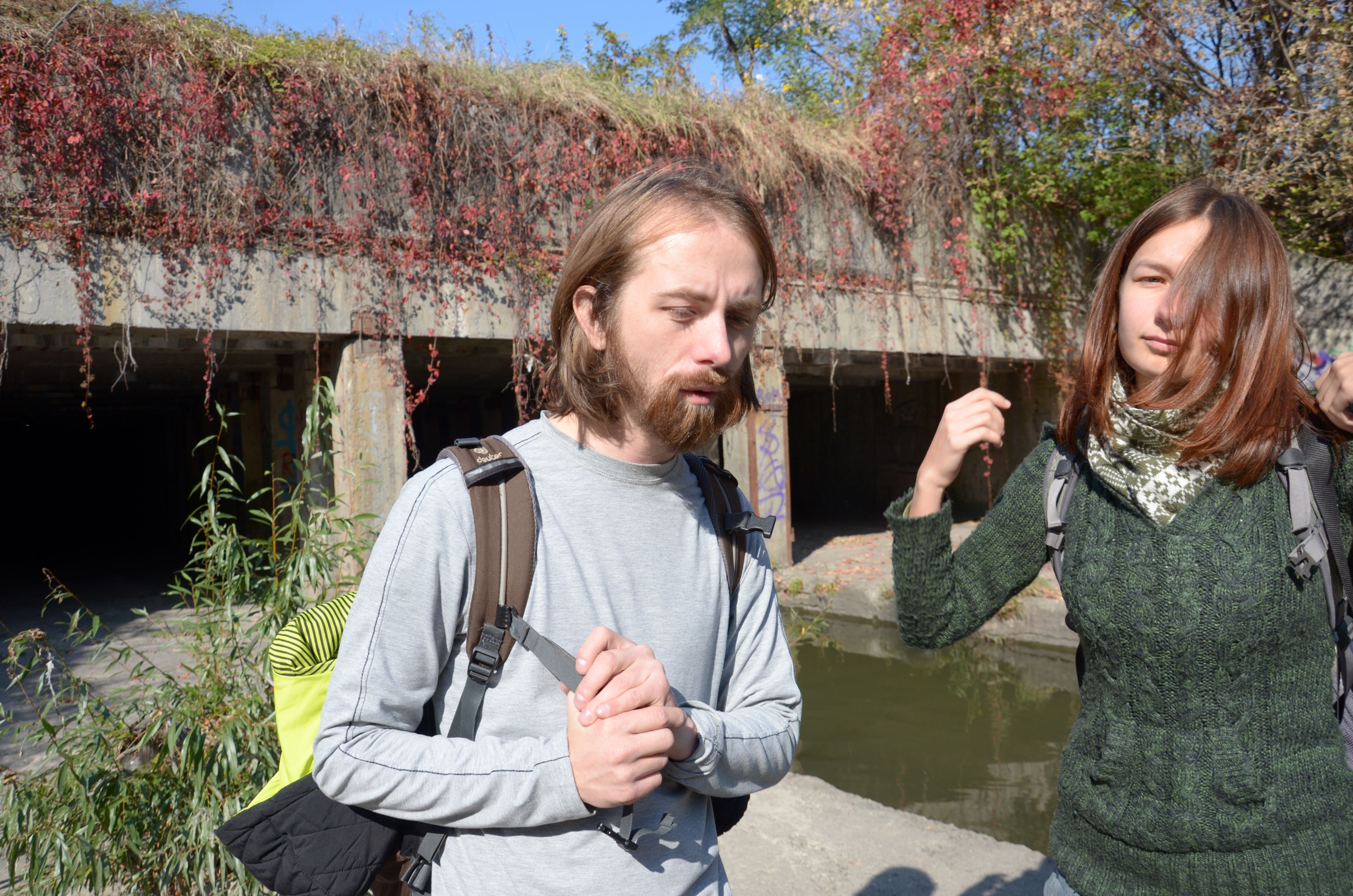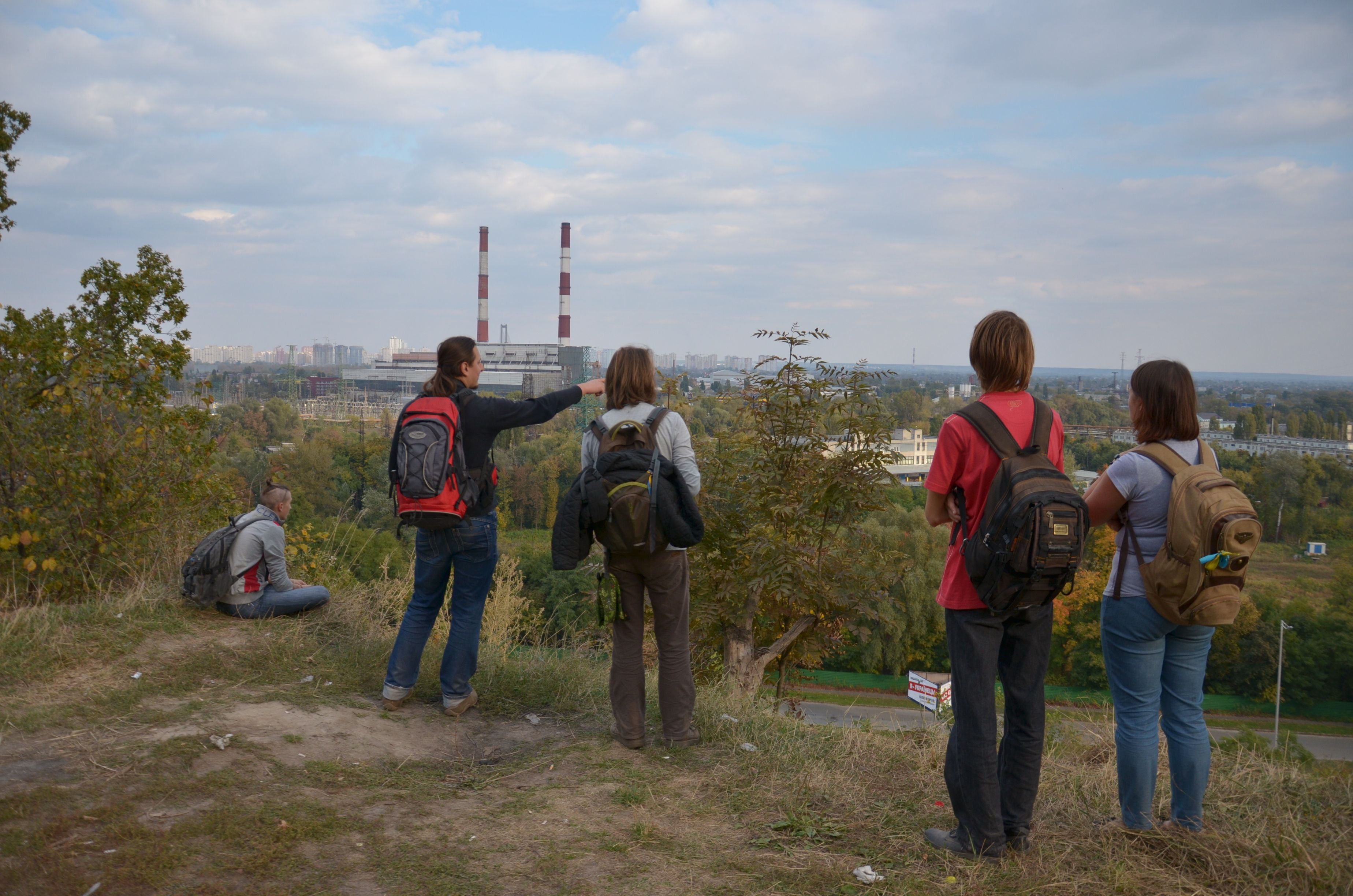"This is where they dumped the debris of the revolution", says Oleksij Vasyliuk, an environmental activist from Ukraine, bending to pick up a white object glittering on the ground: a spent shotgun shell.
When the violent protests at Kiev's Independence Square ended in early spring, there were thousands of tons of smoldering rubble left over from months of fighting on the barricades.
Broken bricks, steel wire from burned tires, twisted metal, bullet casings, and all kinds of sundry trash: it all had to go somewhere, quickly.
And one of the impromptu locations chosen for that purpose was a field at the foot of Lysa Hora, a large wooded hill on the southern edge of Kiev, which is also an important nature park and cultural heritage site.
"Dozens of trucks unloaded huge mounds of garbage and ash right next to the park", remembers Vasyliuk. "The city authorities actually tried to convince us that the ash was snow."
The mounds of garbage and ash are all gone now, thanks to the efforts of Vasyliuk and several of his associates, who forced the city authorities to come back to pick up their mess at Lysa Hora and move it again, this time to a legal landfill.
In Ukraine, civic spirit has been rekindled
The revolution in Kiev and the continuing war against pro-Russian separatists in the east of the country may not have radically changed the political practices in Ukraine, but it has certainly helped to consolidate Ukrainian national identity and raise the civic spirit among many, who previously felt apathetic.
The proverbial 'civil society', which various organizations and NGOs have been trying to promote unsuccessfully for over two decades in Ukraine, seems to have taken root in a few months here.
One of the unintended consequences has been a stronger focus on environmental activism and the importance of protecting of one's own country's natural - and thus national - treasures.
"I think there is a direct connection between the Maidan revolution and environmental revival", says Daria Shiryaeva, a fourth-year zoology student at the Taras Shevchenko National University in Kiev and environmental activist.
"People started feeling more engaged, feeling more responsibility to the world they live in. Patriotism could be expressed in many ways."
The war has also sparked green consciousness.
A few months ago, in May, Shiryaeva helped to revive the so-called druzhina, or fellowship, at her university. The druzhina, which may be best described as a nature protection taskforce, boasts a long history in Ukraine and the countries of the former Soviet Union.
The movement dates back to the late 1950s, when Soviet university students, riding the tide of the era's growing environmental awareness, began organizing themselves into special groups that monitored the health of ecosystems, kept away poachers, and promoted sustainable agricultural practices.
It was an idealistic and mostly futile exercise in a totalitarian state, which took little notice of public opinion and saw nature as an adversary to be conquered by mega projects, yet in later years the druzhina movement became a breeding ground for political dissidence.
The druzhina at Kiev's National University existed only on paper when Shiryaeva took over earlier this year and had a single member: the previous head officer.
A spate of patriotic fervor awoken by the crisis in Ukraine, however, has raised the unofficial membership of the druzhina, called Green Future, to more than two dozen young volunteers. The war, it seems, has generated not only hatred. It has also sparked green consciousness.
"We try to dedicate at least one day a week to fight for justice for nature", says Oleksij Vasyliuk, who, as a druzhina alumnus and now deputy head of the National Ecological Center of Ukraine, an NGO, supports Shiryaeva in her task to revive environmental activism among university students.
As budgets are cut, volunteers fill the gap
One of Green Future's recent projects has been to check on the condition of nearly 200 protected sites and natural objects in and around Kiev, including Lysa Hora, and map places where illegal trash disposal continues to be an issue.
Members also act as volunteers at various nature reserves around the country in a time when the budgets for environmental protection has been severely strained because of the war effort and environmental issues have faded from public attention.
"Volunteers have been a great help to us", says Andrey Sagaydak, the director of the Mizhrichyanskyi Regional Landscape Park, one of the biggest and perhaps best kept natural territories in Ukraine, two hours north of Kiev.
In the past few months members of the druzhina of Kiev's National University have been frequent guests at the park, helping with the upkeep of trails and facilities.
"Maidan generated a lot of enthusiasm, even among those who were previously indifferent, and we've seen a rise in the number of volunteers willing to come here and help the park. People are becoming interested not only in natural protection, but in ethnography as well", says Sagaydak.
3,000 square kilometres damaged by fire - the cost of war
The war, however, never quite disappears from sight. The latest and most ambitious environmental project undertaken by Vasyliuk and Shiryaeva, supported by the organization Environment-People-Law, has been the creation of digital maps and graphs showing the frequency and intensity of fires in the war-torn eastern part of Ukraine.
Using the most recent information from NASA satellites, Shiryaeva and Vasyliuk have been able to show that the number of fires has increased 15 times in comparison to last year.
They have calculated that 17%, or almost 3,000 square kilometers, of the war zone's vegetation cover - forests, steppes, and fields - have been affected by fires so far.
The environmental damage of Ukraine's war may be much more severe than anyone has imagined and it could take years to heal.
"Right now we can only monitor the situation", says Vasyliuk. "We wish we could provide solutions to the environmental problems we see related to the war. But we feel powerless right now. We can only record the damage."











